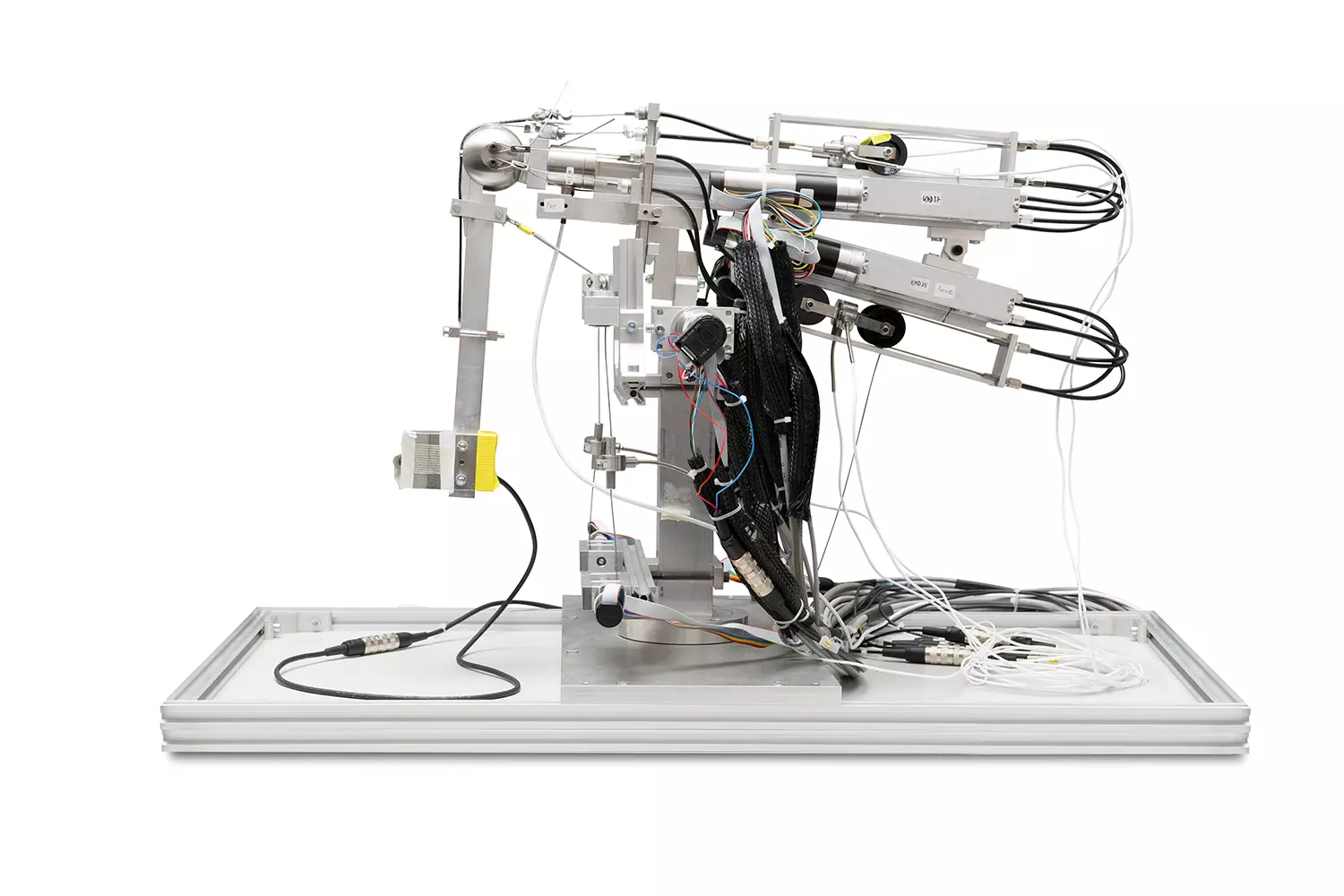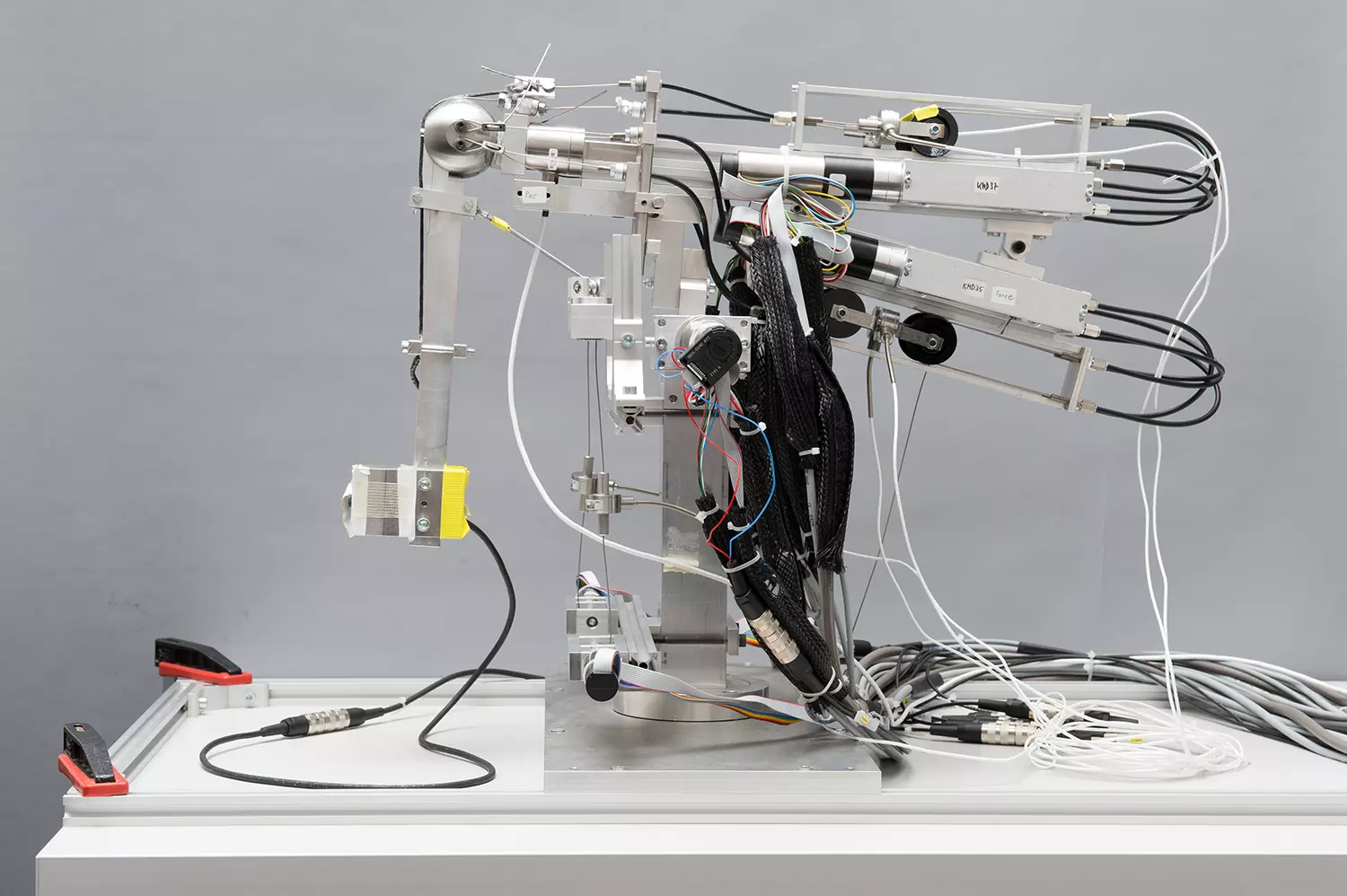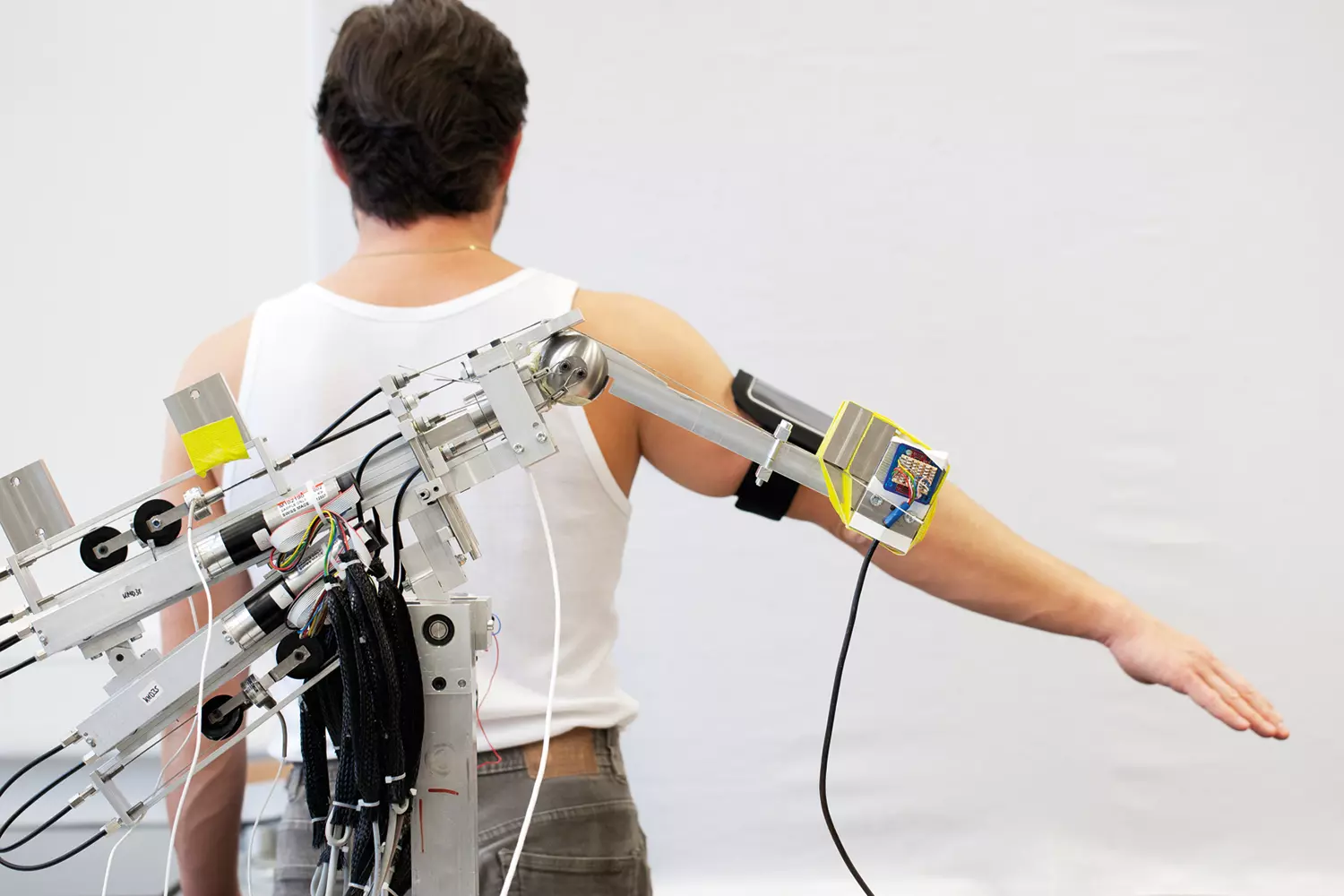Extension of a shoulder simulator
A total of 27 muscles are needed to support or move one of the most important parts of the body: The shoulders are a complex structure and therefore particularly susceptible to injury. At IMES, an already existing shoulder simulator was expanded as part of this master's thesis. Thanks to this development, the musculoskeletal system of the shoulder can now be better simulated and researched.
Knowledge gaps and mechanical challenges
The shoulders are among the most complex structures in the human body. They require 27 muscles to be held or moved. If the function of the shoulders is impaired, this can have dramatic consequences for independent, autonomous living in everyday life: The performance of activities such as dressing, cooking or cleaning the body can be massively impaired, and affected persons need support. The treatment of shoulder injuries is correspondingly demanding. The better the shoulders - and especially the shoulder joint - are researched, the greater the chances that an injury can be completely healed. There is still a lot that can be done in the field of biomedical research in this regard. There is also a lack of the basic knowledge needed to assess the possibilities of surgical interventions.
Modular extension as a solution
In order to be able to control the simulator, a connection between the hardware and the LabVIEW software had to be created using a real-time controller. In this way, the simulator can be controlled by a specially programmed Real Time Device. Thanks to this extension, a higher level of muscle and joint forces can now be simulated in the physiological range of in vivo measurements. To expand the simulator, a thorax and several motors with a coil and load cells were integrated into the already existing shoulder simulator. However, this new unit was not permanently installed. For tests of other kinds, the simulator can be returned to its original state within a few minutes. Thus, a variety of test set-ups can now be carried out and existing models can be validated.
About the author of the work
With his Master's thesis "Extension of a patient-specific, experimental-analytical shoulder simulation", Dennis Lange earned his Master of Science in Engineering (MSE) degree. He was supervised at the Institute for Mechanical Systems in the Department of Biomechanical Engineering.
Supervisor: Daniel Baumgartner


